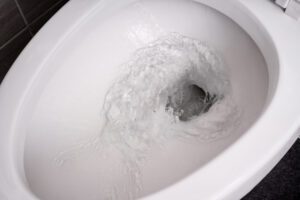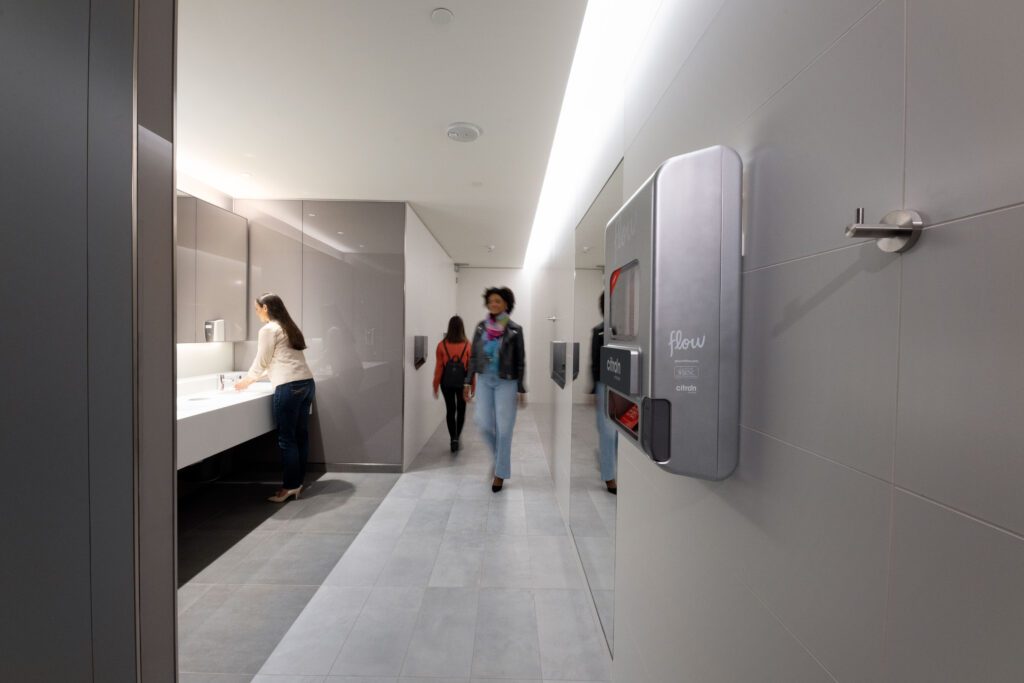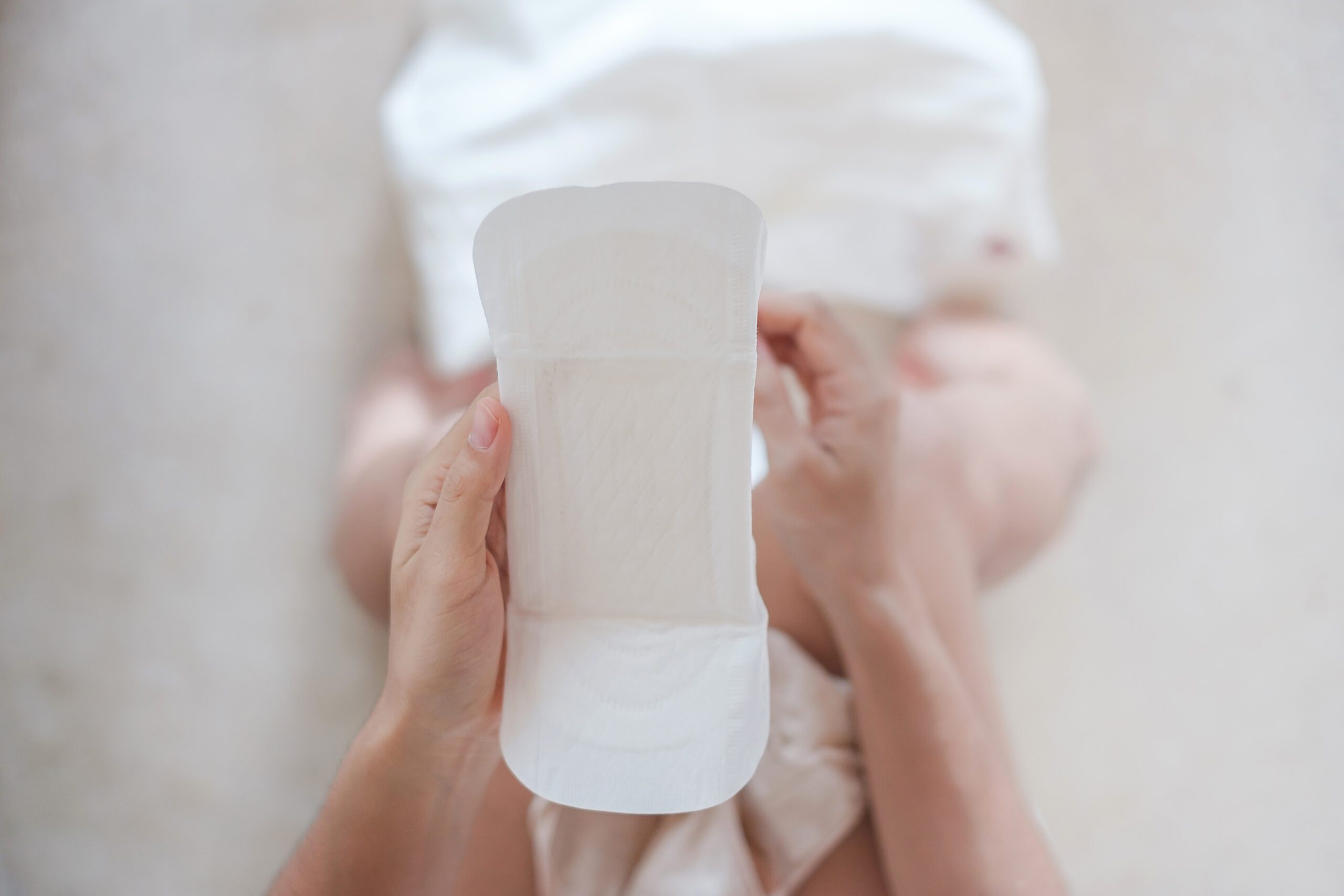Table of Contents
Last Updated on April 27, 2023
How to dispose of a sanitary napkin – otherwise known as “pads” – isn’t common knowledge, despite the wide use of these period products.
🛑 This is a problem.
Why?
Americans buy more than 5.8 billion menstrual hygiene products annually, and America makes up only one third of the global population buying these products.
The average menstruator will use anywhere between 5000 and 15,000 sanitary napkins or tampons throughout their lifetime – and many of these are laced with plastics that don’t break down.
Many of these products – both sanitary napkins and tampons – will end up in the landfill – or in your plumbing – unless menstruators are provided with hygienic solutions for disposing of their menstrual waste.
We have the details – and the solution – for you in this article.
In this article learn about:
- Sanitary napkin disposal
- Sanitary napkins and the environment
- The best solution for hygienic sanitary napkin disposal
Let’s get started


Can you flush pads down the toilet?
No. Sanitary napkins, also known as pads or feminine napkins, should never be flushed down the toilet.
However, many menstruators do flush pads down the toilet regularly.
Why?
One reason is that proper menstrual hygiene waste disposal solutions aren’t readily available, and the other is a lack of menstrual education.
There’s no need to “turn red” when talking about used pads and tampons – in fact, breaking through period shame and stigma is one of the best things businesses and schools can do to support menstrual equity, women’s health and the environment.
What happens if you flush a pad down the toilet?
Sanitary napkins are designed to absorb a high volume of moisture without breaking down.
Most menstrual pads are made of superabsorbent polymers which expand while soaking up menstrual blood.
According to plumbing experts, tampons and sanitary napkins do not break down quickly, and therefore tampons and sanitary napkins are among the top causes of drain blockages and potentially major plumbing issues in homes and businesses.
Unlike toilet paper which breaks up, when a pad is flushed down the toilet it will expand and absorb sewage water, causing clogs in toilet pipes and problems further down the plumbing system. The same logic applies to tampons that are flushed down the toilet.
Sanitary napkins and the environment
There is little known about the possible health effects of the long-term use of sanitary napkins or tampons.
There are environmental and women’s rights movements who raise awareness on the possible health issues embedded in traditional pads and tampons that menstruators may not be aware of, including the Detox the Box movement.
You may not know this, but many sanitary napkins and tampons are laced with plastic particles that make them hard on the environment because they don’t break down.
When pads are deposited in trash bins, parts of the products (eg. the cotton) break down, however the plastic particles (applicators, plastic adhesives, plastics added to cotton products, etc) remain intact and end up washing out into oceans and other water bodies.
There are genuinely eco-friendly menstrual hygiene products available for use – check out our partners at Aunt Flow for more details about sustainable sanitary napkins.


Protecting the environment and women’s health: alternative sanitary napkins
There are actually biodegradable and sustainable menstrual hygiene products from eco-friendly brands who care about women’s health AND the environment, which is one of the reasons we partnered with Aunt Flow to ensure our customers provide sustainable period products like tampons and pads through free-vend menstrual product dispensers.
Whether you’re investing in personal menstrual hygiene products, or you’re making bulk purchases to stock up your menstrual hygiene product dispensers in public restrooms, you need to read the product label and check if these products are truly eco-friendly.
Menstrual hygiene products that are biodegradable or compostable should still not be flushed down toilets.
Although these products are designed to break down over time, they don’t break down quickly enough to flush through the pipes without potentially causing blockages.
How to safely dispose of sanitary napkins
Believe it or not, there is a way to avoid menstrual hygiene waste buildup AND plumbing issues in your public and/or workplace restrooms.
How?
Every menstruator should have access to a sanctuary napkin receptacle, also known as menstrual hygiene waste disposal units, directly in the bathroom stall. Used pads and sanitary napkins should be disposed of directly in a touch-free menstrual hygiene disposal unit.
Gone are the days of the dirty metal wall boxes – public bathroom and menstrual hygiene standards have evolved.
Trust the experts! At Citron Hygiene we dispose of menstrual waste in an eco-friendly and professional manner, and we’re helping more businesses do the same.
In fact, proper menstrual waste solutions like sanitary napkin receptacles are one of the most important ways to create period positive spaces in the workplace and in schools.
When you partner with us, your eco-friendly, hygienic menstrual waste disposal solutions are completely maintained by our professional team of waste disposal experts.
As part of our suite of menstrual waste disposal solutions, we provide:
- Menstrual hygiene disposal units (including touch-free units)
- Menstrual hygiene waste disposal (we take it right out of the building for you)
- Eco-friendly waste management of menstrual hygiene products
- Regular maintenance and disinfection services
Keep your washrooms clean, your waste removal efficient, and protect your pipes with the right Citron Hygiene suite of hygiene solutions that fit your needs.
Book your free consultation today!
Related posts:
- Can you flush tampons down the toilet?
- Infographic: Dr. Gerba’s Research on the Risks of Poor Sanitary Disposal
- Disposal of tampons and sanitary napkins: Why outsource your menstrual hygiene waste needs?
- Why Your Business Needs Sanitary Waste Receptacles
- Infographic: Metal Wall Boxes VS. Touch-Free Menstrual Disposal
- Infographic: Personal Hygiene Disposal Create more Inclusive Washrooms
- Infographic: PPE Disposal
- 10 Items That Have More Germs Than a Toilet Seat
